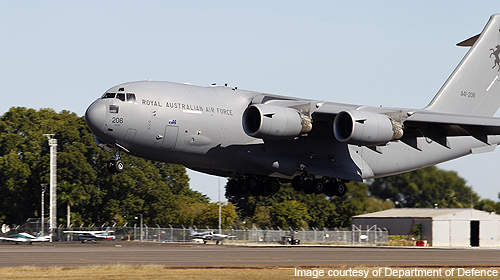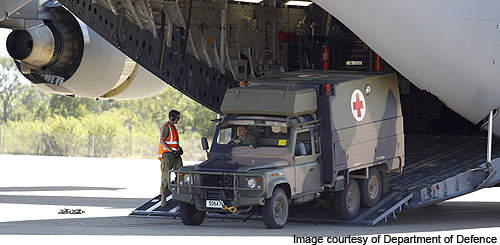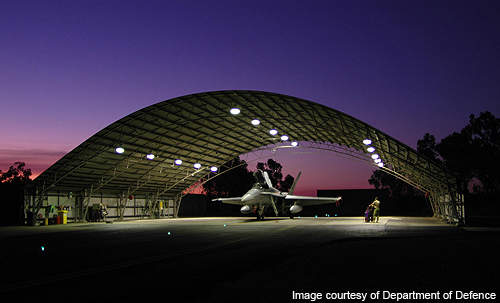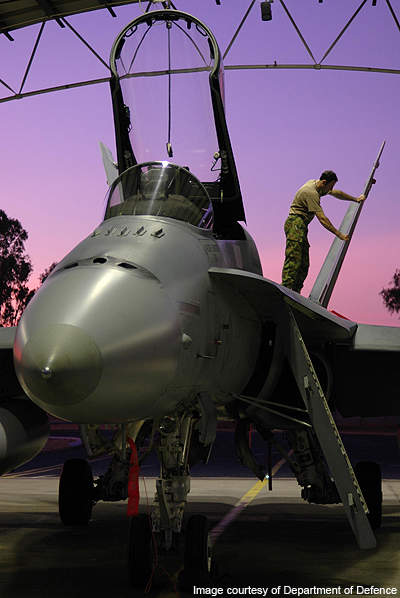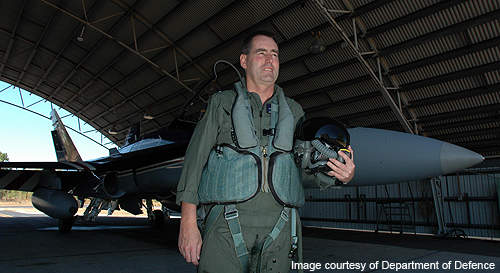The Royal Australian Air Force (RAAF) Base Tindal is a military training base located 15km from the town of Katherine in the Northern Territory. It was officially opened in 1988 and also serves as a staging base for exercises conducted in the area.
Although situated outside Katherine, the base’s contribution to the community includes activities such as flood relief, defence aid for the civil community and offering the base’s sporting facilities to the community.
The base has undergone four redevelopment projects since its official opening. A fifth redevelopment project is underway with the objective of improving the working environment and support facilities for the airmen and women permanently deployed at the base. The project commenced in mid-2009 and is scheduled for completion by late 2011.
The Australian Government has committed $58.7m towards the redevelopment.
RAAF Tindal history
RAAF Base Tindal was constructed in 1942 for use as a heavy bomber base during WWII. It was then named as Carson’s Airfield. It, however, had no aircraft and hence was never operated.
The airfield was redeveloped as a non-garrison base by No. 5 Airfield Construction Squadron during 1963-1970. In 1984, the Government had decided to redevelop the base as a manned, operational military airfield with No. 75 Squadron forming a permanent base there.
It was again redeveloped in 1988 as part of the Stage 2 development plan. This round of redevelopment involved investment of $34.9m towards extension of the taxiway, technical and support facilities and engineering services.
Aircraft shelters and associated pavements, facilities and engineering services were added in 1991 as part of the Stage 3 development at an investment of $53.5m.
Stage 4 was carried out in 1996 at an investment of $31.4m. It involved construction of operational facilities for maritime patrol aircraft, extension of air movement aprons, a command post, a contingency accommodation and associated engineering services.
Design and construction
Leighton Contractors was contracted for the design and construction of Stage 5 development works, and installation of an Airborne Early Warning and Control (ARW&C) facility.
The development consists of 12 elements that involve refurbishment, upgrading or replacement of various existing facilities.
The central emergency power station currently working at 70% of the daily peak load will be increased in capacity to meet the future needs.
A new permanent drinking water supply, hydrants, hose reels and septic tank toilets will be installed. The existing kitchen will be replaced to provide in-flight and hotbox meals in compliance within Occupational Health and Safety (OH&S) standards.
A liquid dry breathing oxygen storage facility will be built as the existing arrangement doesn’t comply with the required safety distance from the nearby fuel farm.
The ordnance loading apron will be installed with electronic security monitoring capabilities for loading of the new missile systems.
Increases in aircraft operations have meant extension and improvements are required for the existing fire station and training facilities in the Stage 5 redevelopment plan.
The project also involves demolition of the Bellman hangar, which was constructed in the 1960s. This was being used as a storage area due to insufficient space in the existing warehouse. Additional permanent pallet racking and receipt and dispatch areas are being constructed in the existing warehouse along with the refurbishment of current office space.
Other works include the refurbishment and remodelling of kitchen benches, replacement of equipment and improvements to the emergency lighting and fire protection system. In addition, the indoor and outdoor spaces are also being expanded.
Garrison facilities
Tindal base is home to No. 75 Squadron, No. 1 Combat Logistics Squadron, No. 322 Combat Support Squadron, No. 1 Air Terminal Squadron Detachment Tindal, 2 Expeditionary Health Squadron Detachment Tindal and No. 2 Control and Reporting Unit. The base also has a detachment of The Army’s North-West Mobile Force (NORFORCE). No. 44 Wing Detachment Tindal is responsible for air traffic control at the base.
Air facilities
The No. 75 Squadron at Tindal is operates F/A-18 Hornet aircraft. The north and south annexes of two adjacent hangars are used to maintain the aircraft. The annexes are being expanded as part of Stage 5 redevelopment.
Aircraft are fuelled using a road taker that is maintained at a fuel farm. A new fuel tanker maintenance facility will be built under the redevelopment as the existing refuelling and maintenance facilities are not in compliance with the OH&S standards.
The base has a single runway that is 2,742m-long and 45m-wide. Two taxiways are linked to the end of the main runway to serve as emergency runways.
Tindal was selected for use as a Forward Operating Base for Boeing Airborne Early Warning & Control aircraft. New parking aprons, taxiway access, aircraft shelters, hydrant refuelling and technical support facilities are being proposed to support the new operations.
Security
RAAF began using the Northern Regional Operations Centre (NROC) at Tindal in September 2010 to provide surveillance and space management operations across Australia. The final system acceptance is expected in mid-2011.
Technology
The existing Air Defence Command and Control Systems at the NROC are being replaced by new systems, called Vigilare, by Boeing Australia. The new systems are being installed as part of Project Air 5333, which includes a similar replacement at RAAF Base Williamtown.
C-E Services was contracted to provide project management, engineering and installation works.
To connect incompatible communication equipment together for seamless transfer of information, software called WAVE developed by CISTECH Solutions was chosen.

